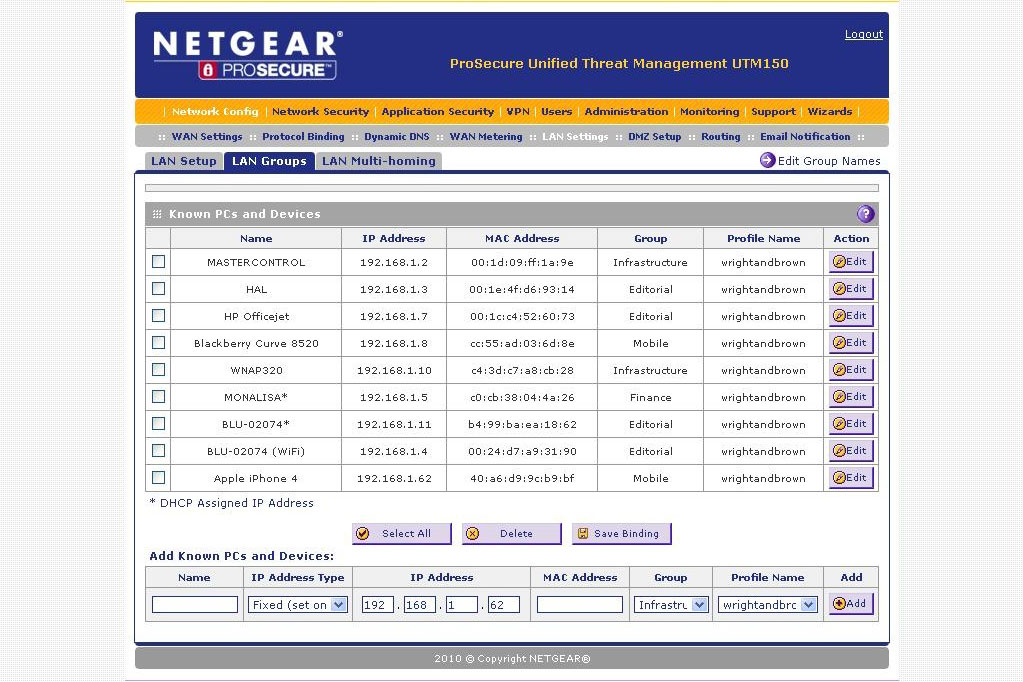Netgear ProSecure UTM150
Netgear is better known for its network routers and switches than its security appliances. Karl Wright takes a look under the hood of the ProSecure UTM150 to see if the new unified threat management appliance is right for you.
It's not perfect, but the Netgear ProSecure UTM150 provides comprehensive cover against the security threats faced by most small business networks, giving you the tools you need to manage both your users and the risk that comes with exposing your systems to the internet.
As well as being a switch, internet gateway and a security appliance, the UTM150 is also a VPN gateway, with support for both IPSEC and browser-based SSL VPNs. Setup is relatively easy, using the built-in VPN wizard. The SSL VPN is particularly useful, allowing users to access the local network from any computer with an internet connection and a browser, no client software required. We used the VPN to remotely access our network over the course of a week, working remotely with all the machines on our server accessing files and taking over some of the systems using Remote Desktop Connection. The VPN connection was reliable throughout.

By segmenting devices on the LAN into groups, by IP address, it's easy to apply different settings to different users, or groups of users, on your network.
One of the things we liked most about the UTM150 was its flexibility. With it, you can block or allow access to content for everyone on your network or for certain groups only. In the Network Configuration screen, you simply arrange devices by IP address into groups. Then apply to each group the appropriate level of content filtering. You can also apply different schedules to different groups, for instance allowing a group of machines restricted access to the internet during the week. but unrestricted at the weekend. This level of specificity was very useful, making it possible to prevent some users on our network gaming and using certain websites except at the weekends.
We did have trouble with the appliance's handling of SSL certificates. Even when we had installed the UTM's root certificate in our client browsers and told the UTM to trust some of our test sites' certificates, we still had problems accessing the sites, with some content not displaying properly. There was no reason we could see for this and we couldn't find a way around it.
Sign up today and you will receive a free copy of our Future Focus 2025 report - the leading guidance on AI, cybersecurity and other IT challenges as per 700+ senior executives
-
 Pure Storage’s expanded partner ecosystem helps fuel Q3 growth
Pure Storage’s expanded partner ecosystem helps fuel Q3 growthNews The data storage vendor has announced a 16% year-over-year revenue hike in its latest earnings report, driven by continued channel and product investment
By Daniel Todd Published
-
 Partners have been ‘critical from day one’ at AWS, and the company’s agentic AI drive means they’re more important than ever
Partners have been ‘critical from day one’ at AWS, and the company’s agentic AI drive means they’re more important than everNews The hyperscaler is leaning on its extensive ties with channel partners and systems integrators to drive AI adoption
By Ross Kelly Published
-
 Cisco named official partner of Madison Square Garden in multi-year network overhaul
Cisco named official partner of Madison Square Garden in multi-year network overhaulNews The tech giant will underpin the digital infrastructure of ‘The World’s Most Famous Arena’ with AI-ready data centres and advanced wireless connectivity
By Rene Millman Published